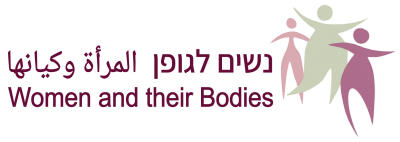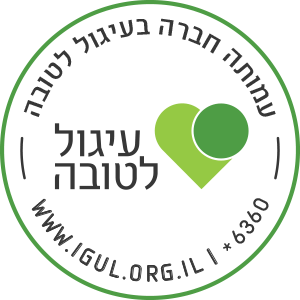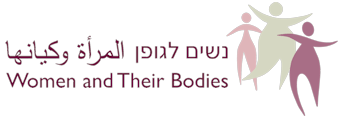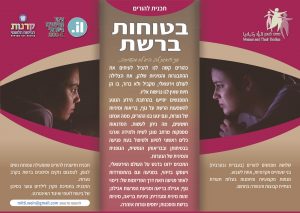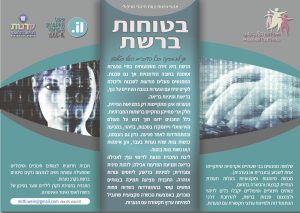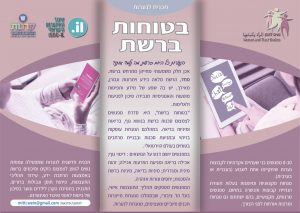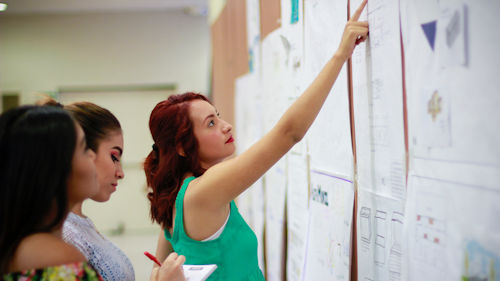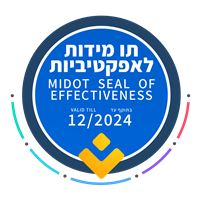Online Safety
– Principal of Arab school –
Safty Online

– Principal of Arab school –
"Online Safety" for Adolescent Girls
is an innovative program run by Women and their Bodies, with the support of the National Insurance Institute Fund for Development of Services for Children and Youth at Risk, and the Israel Internet Association.
The main purpose
is to minimize damage and risks and create a sense of online safety for Jewish and Arab girls, ages 12-18 , and foreducation/health professionals and parents..
An estimated 2.5 billion people interact online around the world. The “internet generation” refers to young people who grew up in a technology-based environment and are used to rapid information flow and data processing, with multi-tasking skills and expectations of immediate results. The internet and digital media at their fingertips invite endless opportunities, intriguing and enjoyable alongside the inherent risks. The internet provides young girls with opportunities to expand their reach in searching for information, learning and sharing, enables them to interact socially without meeting in person, and deal with stressful situations in new ways (for example anonymous questions). At the same time, the online world holds many risks and exposure to inappropriate content in areas related to health, body, and sexuality. Popular online content can lead to the development of negative body image, eating disorders, sexual abuse, and even connecting with sex offenders. In addition, they may be exposed to threatening content, exploitation, harassment, fraud, slander and even shaming and social exclusion without having to meet face-to-face.
Why does this program focus on adolescent girls?
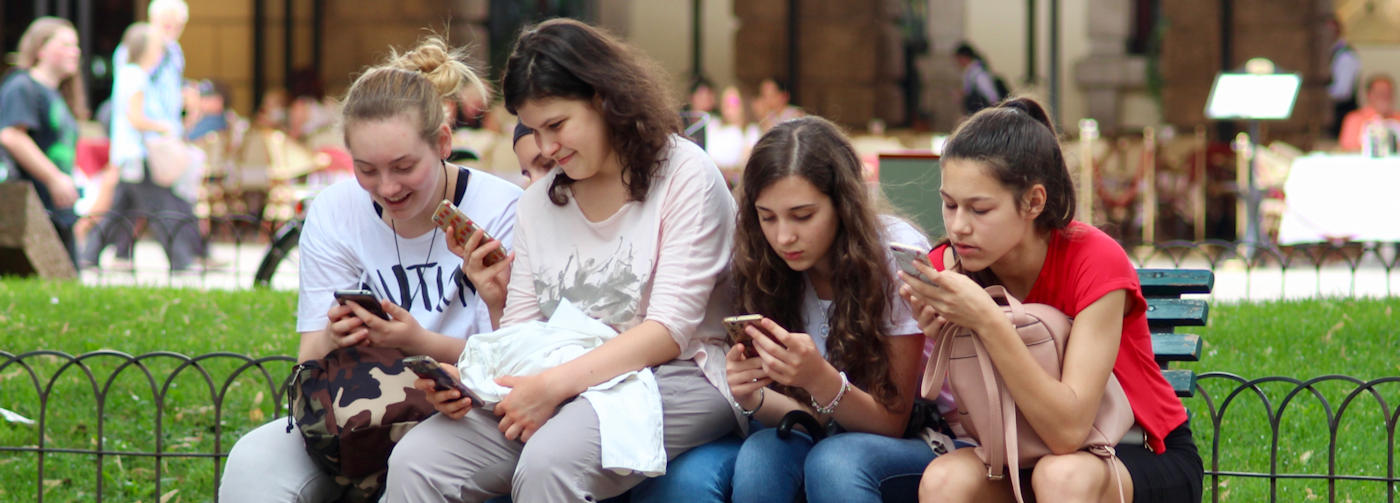
What do we offer?
Our online safety program works with three target audiences separately or in parallel:
We recommend conducting a series of sessions with education and health professionals parallel to or before the sessions with the girls.
The program focuses on developing strengths and recognizing the online dangers and how to handle them, to help empower girls, develop strengths and clear boundaries, while encouraging a positive image of themselves and their bodies. The work is done through workshop sessions (in Hebrew or Arabic) with an experienced group facilitator and content adapted to each group. The workshop provides the girls, the professional teams and parents with reliable information, the opportunity to share and go through a process of change that will help minimize the potential damage to emotional, physical and sexual health and safety, and provide the professionals and parents with the tools to identify and minimize online risks.
Purpose of the program
Minimize future damage:
Young girls who have experienced difficulties, neglect and harm may develop and retain destructive behavior patterns.
Empowerment
mending girls’ relationship with their bodies, sexuality, and health: The workshops and groups go through a process with the girls, their relationship with their bodies, an in-depth process of re-acquaintance from a positive and accepting perspective.
Raise awareness
and expand knowledge among girls, professional teams and parents and open a communication channel: The work in parallel with professional teams and parents enables removal of emotional barriers and a chance to process and grow. As we know, the way to awaken and promote change is not to lecture about the right way to do things but rather raise awareness and create a dialog through professional group work.
main topics
Program for adolescent girls – main topics
Programs for professional teams and parents
In addition to our work with adolescent girls, we work with education and health professionals as well as parents:
The rationale for this is that we are temporary guests in various frameworks, while they are the responsible adults in the field, and they have to be prepared to handle these issues. One of the most significant claims heard frequently from young girls in the workshops is that adults find it difficult to talk with them about the various aspects of sexuality. The program recommends a model for an open channel of communication with professionals who are willing to “talk about everything” (culturally adapted), since adolescent girls often find it difficult to identify the connections between sexuality to boundaries and online safety. A skilled facilitator offers a safe space and provides parents with informed ways to deal with their concerns regarding the virtual and competitive world, their secret fears, and the obscure desires of the girls. Within that space the facilitator not only offers recommendations on how to deal with online dangers and the increased risk and exposure to violence and abuse, but also uses that as an opportunity for personal development, to expand knowledge and serve as an address for assistance and treatment.
